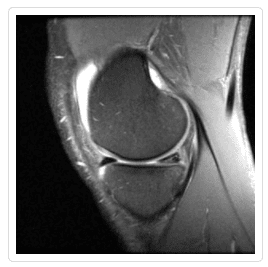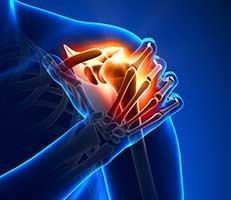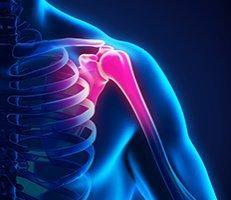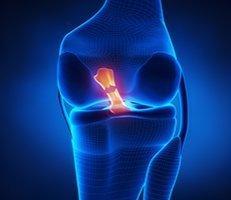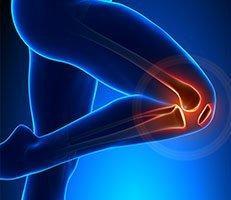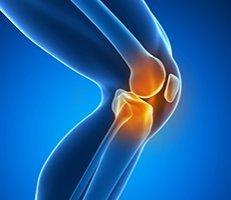Beverly Hills sports medicine expert, Dr. Millstein, is dedicated to providing patients with outstanding service and personalized care to make the entire meniscus tear treatment process as easy as possible. Because of his advanced training with arthroscopic and minimally invasive surgery, Dr. Millstein is regarded as one of the premier orthopedic surgeons in Los Angeles.
What Is A Meniscus Tear?
Meniscus tears are often the result of fast starts, stops, cuts, and pivots. Meniscus tears can also happen when trauma is applied directly to the knee, like a football tackle or if a player was to squat and twist their upper body, while their legs were being held. However, many people also get meniscus tears without any acute injury or trauma, but as a result of everyday wear and tear on the knee.
Should I Have Meniscus Tear Surgery?

Arthroscopic surgery is generally recommended for meniscus tears, as it is the standard outpatient treatment. Without surgery, the tear will likely become larger with activity, and fragments of the torn meniscus meniscus may damage the smooth articular cartilage of the knee, resulting not only in pain, but also an increase in risk for arthritis. However, the main reason to pursue surgery is because the symptoms associated with the meniscus tear—pain, stiffness, swelling, instability—are inhibiting your everyday activities or desired sports. It is best not to leave a meniscus tear untreated if you are experiencing any of the symptoms listed above, and it is important to see an orthopedic surgeon, like Dr. Millstein, who works with athletes and has performed meniscus repairs with great results in the past.
How Is Meniscus Tear Surgery Performed?
Meniscus tear surgery is performed under general anesthesia. Additionally, Dr. Millstein may also request local anesthetic to be used, which will numb the knee and lessen post-operative pain. Meniscus tear surgery is performed arthroscopically; small incisions are made in the knee into which small instruments and a camera are inserted in order to visualize the meniscus and perform the procedure. The surgery lasts about one hour.
There are two ways to surgically fix a meniscus tear: cut out the torn piece or repair of the tear with stitches. Removal of the torn piece, or meniscus debridement, is most commonly performed. Because the meniscus has a very poor blood supply, most tears are unable to heal, even with the aid of stitches. For the large majority of people, cutting out the tear provides relief from the pain, swelling, instability, and locking associated with meniscus tears.
The second option, repair with stitches, can be performed under special circumstances. For tears in very young patients and tears that occur near the ends of the meniscus, where there is a better blood supply, Dr. Millstein may decide repairing the tear is a viable option. Although MRIs can give a good picture of what a tear looks like, the ultimate decision of whether to repair or cut out a meniscus tear will be made during surgery, when Dr. Millstein can best judge the vascularity of the tissue.A more detailed comparison of these two approaches can be found here.
A more detailed comparison of these two approaches can be found here.
When Does the Meniscus Need to Be Removed?
After Meniscus Tear Surgery
Because the surgery may cause temporary pain and discomfort, pain medication is generally provided for up to three days after the surgery. Cold packs are used to reduce swelling and manage pain. In cases of a meniscus repair, a knee brace is used to keep the leg straight and partially control movement.
Rehab Plan for Meniscus Tear
For tears that undergo debridement, the more common option, rehabilitation and physical therapy is generally not required. Patients are typically walking normally at 1 week, 80% back to their normal activities at 1 month, and 90% at 2 months, sports included.
For tears that are repaired the rehabilitation is longer. The main focus of meniscus tear physical therapy is to decrease swelling, regain full range of motion, and build muscle strength. While results may vary depending on the patient’s unique characteristics and the extent of the initial injury, below are some general guidelines:
Week 1 – 6: Rehab in brace (non weight-bearing exercises)
Week 6 – 12: Minimal-impact weight bearing exercises
Week 12 – 16: Low-impact weight bearing exercises
Week 17: Full exercise
It is important to remember that completing physical therapy and being ready to compete in sports are two different things entirely. The guidelines for returning to sports are fairly rigorous, which is why you must make sure you have Dr. Millstein´s clearance before competing at top speed.
Meniscus Tear Gallery
To find more before and after pictures of meniscus tear surgery, please visit Dr. Millstein’s knee arthroscopy gallery.

If you are in need of meniscus tear treatment or would like to know more, contact Dr. Millstein, the premier orthopedic surgeon in Los Angeles.

